Histamine is a neurotransmitter involved in immune responses, digestion, and brain function. It plays a key role in allergic reactions and inflammation. Histamine intolerance occurs when the body cannot properly break down excess histamine, leading to symptoms like digestive issues, skin rashes, and respiratory problems. This condition often requires dietary adjustments to manage symptoms effectively.
1.1 What is Histamine?
Histamine is a biogenic amine and neurotransmitter that plays a crucial role in immune responses, digestion, and brain function. It is naturally produced by the body and found in certain foods. Histamine helps regulate physiological processes such as inflammation, allergic reactions, and stomach acid secretion. While it is essential for overall health, excessive levels can lead to symptoms like itching, flushing, and digestive discomfort, particularly in individuals with histamine intolerance. Balancing histamine levels is key to maintaining well-being and preventing adverse reactions.
1.2 Understanding Histamine Intolerance
Histamine intolerance occurs when the body cannot effectively break down excess histamine, often due to a deficiency of the enzyme diamine oxidase (DAO). This leads to elevated histamine levels, causing symptoms like hives, itching, digestive issues, and respiratory problems. It is not an allergy but a metabolic disorder. Managing symptoms typically involves a low histamine diet, avoiding high histamine foods, and sometimes supplements to support DAO function. Proper diagnosis and tailored dietary changes are essential for improving quality of life and reducing discomfort.
1;3 The Role of Histamine in the Body
Histamine is a neurotransmitter that plays a vital role in various bodily functions. It is involved in immune responses, regulating digestion, and acting as a messenger in the brain. Histamine also contributes to allergic reactions by causing blood vessels to dilate, leading to increased blood flow and inflammation. Additionally, it helps regulate sleep-wake cycles and is involved in hormone secretion. While histamine is essential for normal physiological processes, an imbalance can lead to discomfort and health issues, making its regulation crucial for overall well-being.
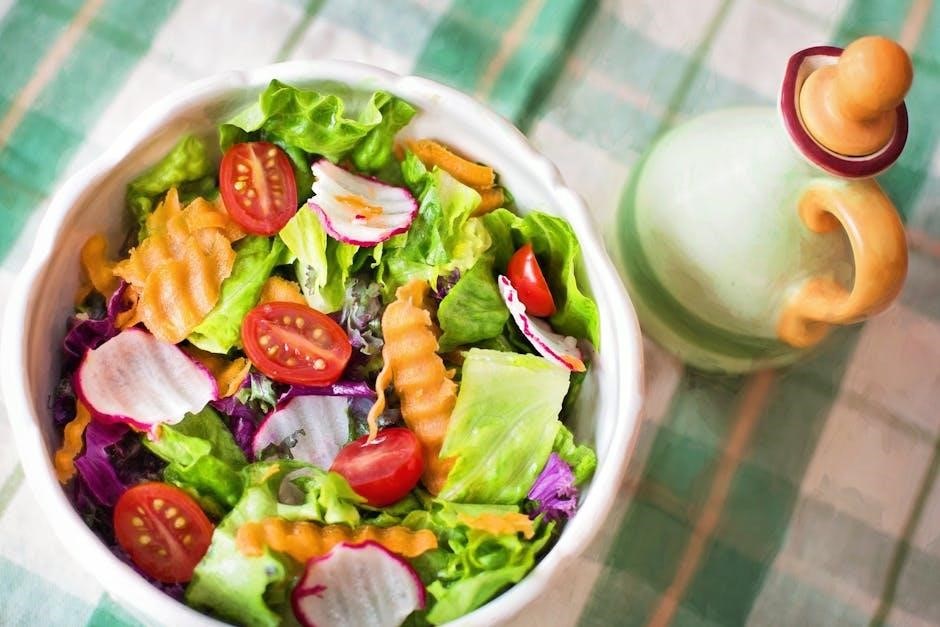
Benefits of a Low Histamine Diet
A low histamine diet reduces inflammation, alleviates allergic reactions, and improves digestion. It can also enhance skin health and boost overall well-being by minimizing histamine-related discomforts.
2.1 Reducing Inflammation and Allergic Reactions
A low histamine diet helps minimize inflammation by avoiding foods that trigger histamine release. This reduction can alleviate allergic reactions, such as itching, swelling, and respiratory issues. By eliminating high histamine foods, the body experiences fewer inflammatory responses, leading to improved symptom management. This approach is particularly beneficial for individuals with histamine intolerance or conditions like MCAS, where histamine plays a central role in exacerbating symptoms. The diet provides a natural way to control inflammation and prevent allergic episodes, promoting overall health and well-being.
2.2 Alleviating Digestive Issues
A low histamine diet can significantly ease digestive discomfort caused by histamine intolerance. Common symptoms like bloating, acid reflux, and stomach pain often improve as high histamine foods are eliminated. By reducing histamine intake, the digestive system experiences less irritation and inflammation. This approach helps regulate gut health, improving nutrient absorption and overall digestive function. Many individuals report fewer gastrointestinal issues when adhering to a low histamine diet, making it a valuable strategy for managing digestive well-being.
2.3 Improving Skin Health
A low histamine diet often leads to noticeable improvements in skin health. By reducing histamine intake, individuals may experience fewer rashes, itching, and redness. Histamine can exacerbate skin inflammation, so lowering its levels can help calm conditions like eczema or acne. Many people report clearer, more radiant skin after adopting this diet. The anti-inflammatory effects of a low histamine diet also contribute to healthier skin, making it a beneficial approach for those struggling with dermatological issues.
2.4 Enhancing Overall Well-being
Adopting a low histamine diet can significantly enhance overall well-being by reducing inflammation and alleviating symptoms associated with histamine intolerance. Many individuals report improved energy levels, better sleep quality, and a reduction in headaches and brain fog. The diet helps stabilize histamine levels, leading to a more balanced bodily function. This, in turn, contributes to a greater sense of vitality and mental clarity, allowing individuals to engage more fully in daily activities and enjoy a higher quality of life.
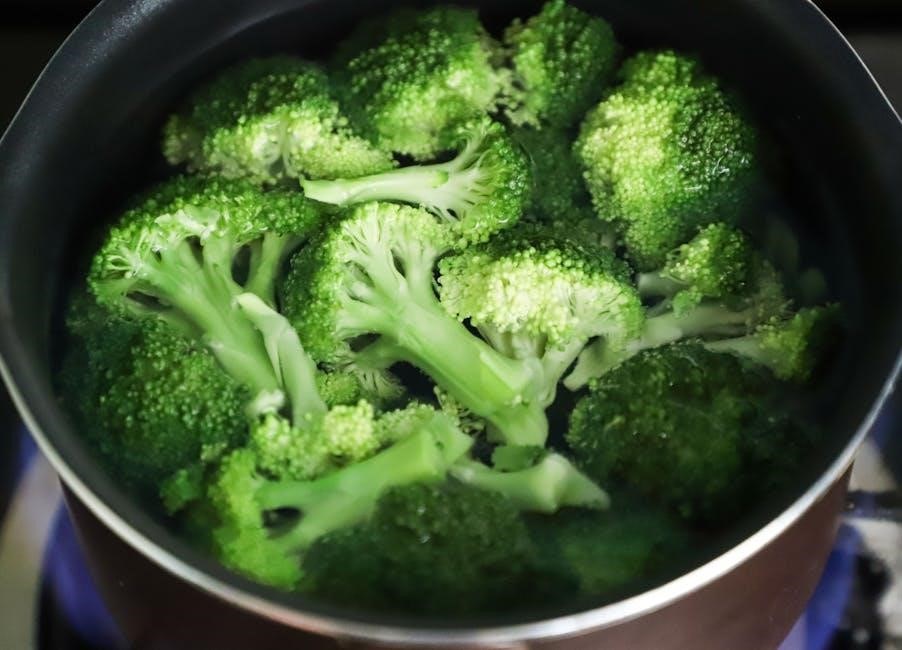
Foods to Avoid on a Low Histamine Diet
Foods high in histamine, such as aged cheeses, fermented items, processed meats, and certain fish like mackerel or tuna, should be avoided to manage symptoms effectively.
3.1 High Histamine Foods
Certain foods naturally contain high levels of histamine or develop it during processing. Aged cheeses like Parmesan and Gouda, fermented items such as sauerkraut, kimchi, and soy sauce, and fish like mackerel, sardines, and tuna are examples. These foods can trigger or worsen symptoms in individuals with histamine intolerance. Avoiding them is crucial for managing the condition effectively. Understanding which foods are high in histamine is the first step toward implementing a successful low histamine diet plan.
3.2 Fermented and Processed Foods
Fermented and processed foods are among the highest in histamine due to their aging or preservation processes. Examples include yogurt, kefir, sauerkraut, kimchi, pickled vegetables, and processed meats like salami or ham. Canned goods, ready-to-eat meals, and foods containing MSG or artificial additives also contribute to histamine levels. These foods can trigger symptoms in individuals with histamine intolerance, making them essential to avoid on a low histamine diet plan. Always check labels for hidden additives that may elevate histamine levels.
3.3 Foods Containing Tyramine and Phenylethylamine
Foods containing tyramine and phenylethylamine can exacerbate histamine intolerance symptoms; Tyramine-rich foods include aged cheeses, marinated meats, and some fish. Phenylethylamine is found in chocolate, certain nuts, and fermented products. These compounds mimic histamine effects, increasing inflammation and allergic reactions. Avoiding them is crucial for managing symptoms effectively. Always refer to a low histamine diet plan PDF for detailed lists of foods to eliminate and substitutions to ensure balanced nutrition while reducing symptom triggers.
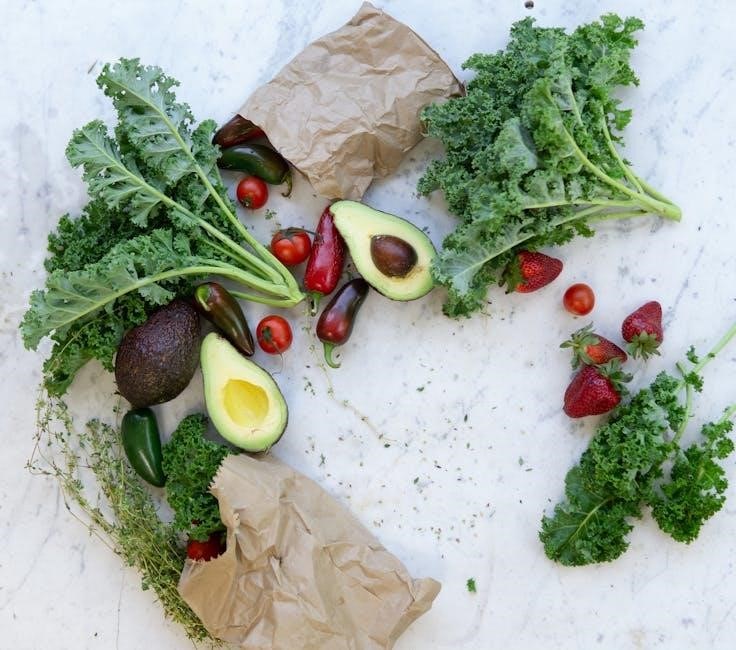
Foods to Include on a Low Histamine Diet
Fresh, non-preserved foods like leafy greens, fresh meats, and certain fruits are ideal. Include anti-histamine rich foods such as cauliflower, onions, and blueberries for balanced nutrition.
4.1 Fresh, Non-Preserved Foods
Fresh, non-preserved foods are foundational to a low histamine diet. These include fresh vegetables like spinach, cucumbers, and bell peppers, fresh fruits such as bananas and pears, and freshly cooked meats and fish. Avoiding preserved or aged foods minimizes histamine intake; Fresh herbs and non-citrus fruits are also recommended. Incorporating these foods ensures a balanced diet while reducing histamine exposure, helping to alleviate symptoms associated with histamine intolerance.
4.2 Anti-Histamine Properties in Certain Foods
Certain foods naturally possess anti-histamine properties, aiding in symptom relief for histamine intolerance. Cauliflower, onions, and blueberries are known to inhibit histamine release or breakdown. Garlic and ginger also exhibit anti-inflammatory effects, which can indirectly reduce histamine-related symptoms. Incorporating these foods into your diet can help balance histamine levels and alleviate discomfort. These options are not only beneficial but also versatile, making them easy to include in various meals for a nutrient-rich, low histamine diet plan.
4.3 Nutrient-Rich Foods for Optimal Health
Nutrient-rich foods are essential for maintaining overall health while managing histamine levels. Fresh vegetables like spinach, kale, and bell peppers provide vital vitamins and minerals. Berries, such as strawberries and raspberries, are rich in antioxidants that support immune function. Lean proteins like chicken and turkey, along with omega-3 fatty acids from fresh fish, help reduce inflammation. Incorporating whole grains and healthy fats, like avocado and olive oil, ensures a balanced diet. These foods not only satisfy nutritional needs but also aid in managing histamine intolerance symptoms effectively.
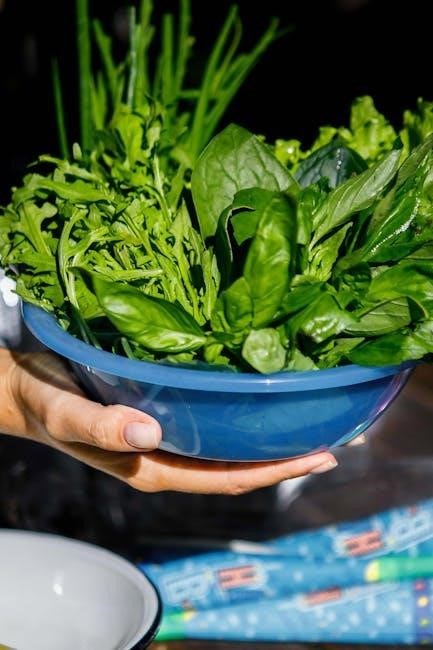
Sample 5-Day Low Histamine Meal Plan
A structured 5-day meal plan with detailed recipes and anti-histamine tips to help manage histamine intolerance. Includes breakfast, lunch, dinner, and snack options for easy implementation.
5.1 Breakfast Options
Start your day with fresh, non-preserved foods to keep histamine levels low. Options include fresh vegetables like spinach, zucchini, or cucumbers, paired with a veggie omelet or scrambled eggs (if tolerated). Fresh fruit like berries (blueberries, raspberries) or citrus, in small portions, can also be included. Consider oatmeal or rice-based breakfast bowls with anti-inflammatory spices like ginger or cinnamon. Herbal teas, such as peppermint or chamomile, are excellent beverage choices. Portion control and balancing meals with anti-histamine properties help manage symptoms effectively.
5.2 Lunch Ideas
For lunch, opt for fresh, histamine-friendly ingredients. Grilled chicken or fish (fresh, not canned) with a side of steamed vegetables like carrots, cucumbers, or zucchini are excellent choices. Salads made with fresh mixed greens, celery, and fresh herbs like parsley or basil are also ideal. Avoid dressings with fermented ingredients; instead, use olive oil and fresh lemon juice. Freshly cooked quinoa or rice can accompany meals for added nutrition. Ensure all ingredients are fresh and portion-controlled to maintain histamine balance while providing essential nutrients.
5.3 Dinner Recipes
Dinner options on a low histamine diet should focus on fresh, non-fermented ingredients. Grilled chicken or turkey breast with roasted vegetables like zucchini, carrots, or sweet potatoes is a great choice. Fresh fish, such as cod or tilapia, can be baked with olive oil and herbs like parsley or dill. Steamed green beans or spinach with a drizzle of olive oil and salt make a simple, histamine-friendly side dish. Avoid fermented sauces or seasonings, and ensure all ingredients are fresh and portion-controlled to minimize histamine intake.
5.4 Snacks and Beverages
Low histamine snacks include fresh fruits like apples, pears, and berries, as well as fresh vegetables such as cucumbers, carrots, and celery. Nuts and seeds, like almonds and pumpkin seeds, are also suitable if consumed in moderation and unsalted. Beverages should focus on water, herbal teas (e.g., peppermint or chamomile), and fresh vegetable juice. Avoid alcohol, fermented drinks, and citrus juices. These options help maintain histamine balance while providing essential nutrients and hydration, supporting overall well-being on a low histamine diet.
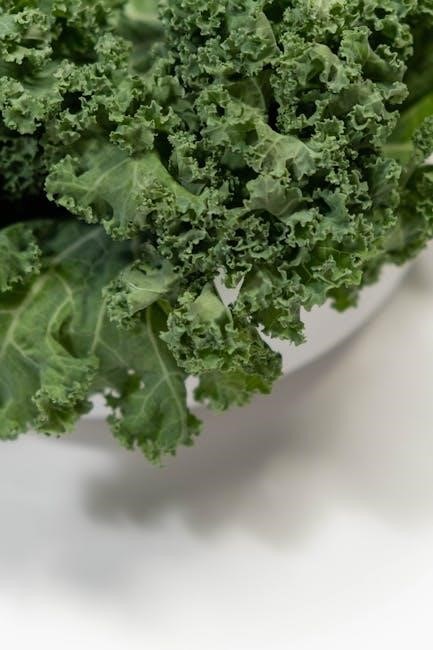
Implementing the Low Histamine Diet
Start with fresh, non-preserved foods and avoid fermented items. Gradually introduce foods, read labels for additives, and opt for cooking methods that reduce histamine levels naturally.
When reintroducing foods, start with one item at a time to monitor reactions; Keep a food diary to track symptoms and tolerance. Begin with low-risk options like fresh vegetables or lean proteins. Allow 2-3 days between introductions to assess any adverse effects. If symptoms arise, remove the food immediately. This method helps identify triggers and prevents overwhelm. Gradual introduction ensures a balanced diet while minimizing histamine-related discomfort, allowing for personalized adjustments over time. Always consult a healthcare provider for tailored guidance.
6.2 Reading Food Labels
Reading food labels is crucial for managing histamine intolerance. Look for ingredients like preservatives, additives, and fermented foods, which are high in histamine. Avoid products with tyramine, phenylethylamine, or other biogenic amines. Check for terms like “contains histamine” or “aged,” as these indicate higher histamine levels. Processed and packaged foods often contain hidden histamine triggers. Always opt for fresh, whole ingredients to minimize exposure. Use apps or online resources to help identify histamine-friendly options and ensure compliance with your diet plan.
6.3 Cooking Tips for Low Histamine Meals
Cooking for a low histamine diet requires careful attention to ingredients and methods. Focus on fresh, unprocessed foods, and avoid fermented or aged items. Opt for gentle cooking techniques like baking, steaming, or grilling to preserve nutrients and minimize histamine release. Use anti-inflammatory herbs and spices, such as turmeric or ginger, to enhance flavor without triggering symptoms. Avoid leftovers, as histamine levels rise in stored foods. Keep portions small and balanced to reduce digestive strain. Always prioritize fresh meats, fish, and vegetables for optimal results.
Managing Symptoms and Tracking Progress
Track symptoms daily using a food diary to identify triggers. Monitor histamine levels and adjust the diet based on improvements or persistent issues. Regularly review progress to refine the plan and ensure long-term effectiveness.
7.1 Keeping a Food and Symptom Diary
A food and symptom diary is essential for tracking progress on a low histamine diet. Record all meals, snacks, and beverages consumed, along with portion sizes and preparation methods. Note any symptoms experienced, such as bloating, rashes, or digestive discomfort, and their severity. This helps identify potential histamine triggers and monitor improvements. Include dates and times to correlate food intake with symptom onset. Reviewing the diary regularly can provide insights into patterns and guide adjustments to the diet. Consistency is key to accurate tracking and effective management.
7.2 Monitoring Histamine Levels
Monitoring histamine levels helps assess the effectiveness of a low histamine diet. Blood tests can measure histamine levels, providing insights into how well the diet is managing histamine intolerance. Elevated levels may indicate the need for further dietary adjustments. Regular testing, combined with symptom tracking, allows for personalized modifications to the diet. This approach ensures that histamine levels remain balanced, reducing the risk of associated symptoms. Consulting a healthcare provider is crucial for interpreting test results and making informed decisions about dietary changes.
7.3 Adjusting the Diet Based on Results
Once histamine levels and symptoms are tracked, adjustments to the diet can be made. If symptoms persist, further reducing high histamine foods may be necessary. Introducing new foods gradually allows identification of triggers. Tailoring the diet to individual tolerance levels ensures long-term sustainability. Regular reviews of food and symptom diaries help refine the plan, promoting better health outcomes. Adjustments should always be done under medical supervision to avoid nutrient deficiencies and ensure the diet remains balanced and effective in managing histamine intolerance.
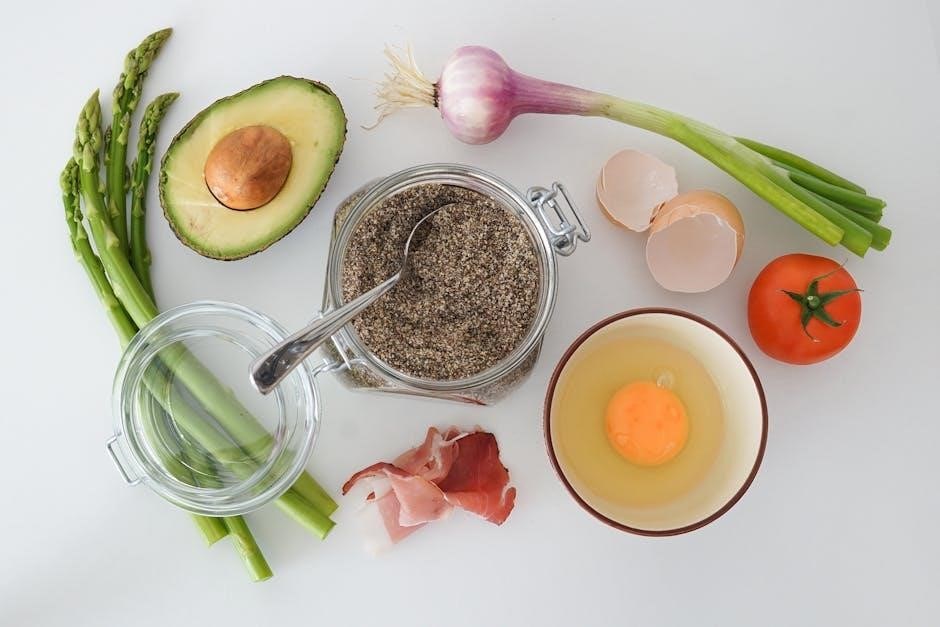
Common Challenges and Solutions
Challenges include cravings, dining out, and maintaining social life. Solutions like meal prepping, researching restaurants, and communicating dietary needs help overcome these obstacles effectively.
8.1 Dealing with Cravings
Cravings can be a significant challenge when following a low histamine diet. To manage them, identify triggers and find suitable alternatives. For instance, if you crave aged cheeses, opt for fresh, non-fermented varieties. Incorporating nutrient-dense snacks like fresh fruits, nuts, and vegetables can help suppress cravings. Staying hydrated and ensuring adequate nutrition also plays a role in reducing the intensity of cravings. Planning meals in advance and keeping healthy options readily available can prevent impulsive choices. Additionally, tracking cravings in a food diary may help pinpoint patterns and underlying causes, allowing for more tailored strategies to overcome them effectively.
8.2 Eating Out on a Low Histamine Diet
Eating out on a low histamine diet requires careful planning and communication. Opt for fresh, non-fermented, and non-processed dishes, avoiding aged meats, cheeses, and fermented foods. Grilled or steamed options are safer choices. Inform your server about histamine intolerance and ask how dishes are prepared. Avoid sauces and dressings, as they may contain high histamine ingredients. Fresh salads with simple oils and herbs are ideal. Always prioritize restaurants that focus on fresh, whole ingredients to minimize histamine exposure and ensure a safe dining experience.
8.3 Maintaining Social Life While Dieting
Maintaining a social life on a low histamine diet requires creativity and communication; Plan ahead by suggesting restaurants with fresh, whole-food options or offering to bring a dish. Inform friends or hosts about your dietary needs to ensure inclusivity. Join online communities for support and inspiration. While it may require adjustments, a low histamine diet doesn’t mean isolating yourself. With proactive planning, you can enjoy social gatherings while staying true to your health goals and connecting with others who understand your journey.
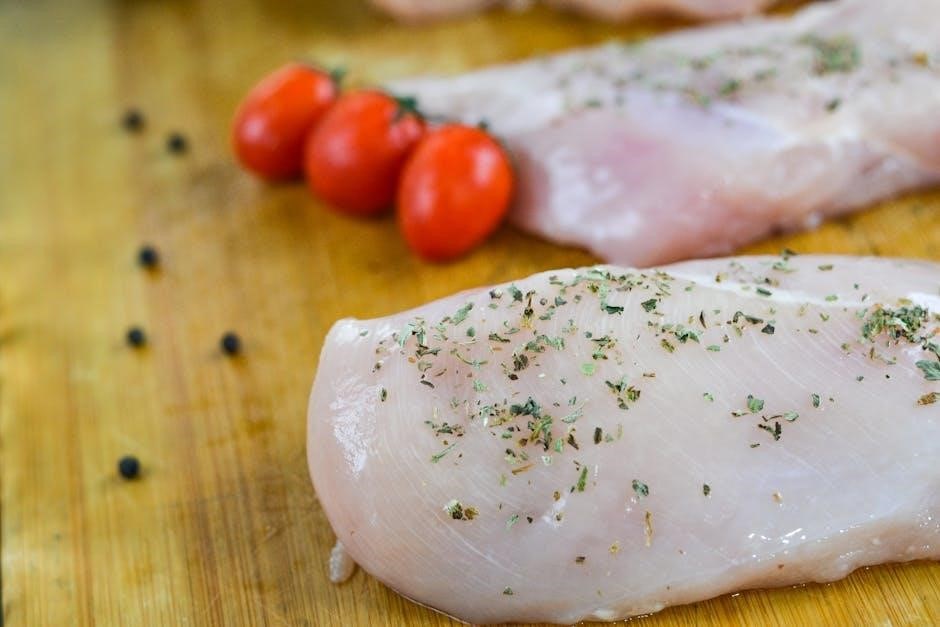
Long-Term Sustainability of the Diet
A low histamine diet is sustainable by avoiding nutrient deficiencies, incorporating varied foods, and periodically reintroducing items to assess tolerance, ensuring long-term adaptability and balance.
9.1 Avoiding Nutrient Deficiencies
Avoiding nutrient deficiencies on a low histamine diet requires careful planning. Fresh, non-preserved foods like leafy greens, fresh meats, and low-histamine fruits are rich in essential vitamins and minerals. Ensure adequate protein intake from fresh fish and meats, and include anti-histamine foods like cauliflower and berries. Consulting a healthcare provider or dietitian can help tailor the diet to meet nutritional needs, preventing deficiencies and maintaining overall health over time.
9.2 Incorporating a Variety of Foods
Incorporating a variety of foods is essential to ensure a balanced low histamine diet. Focus on fresh, non-preserved foods like leafy greens, fresh meats, and low-histamine fruits such as pears and bananas. Rotate protein sources, including fresh fish and eggs, to maintain diversity. Include nutrient-rich foods with anti-histamine properties, such as cauliflower and blueberries. This approach helps prevent nutrient deficiencies and keeps meals enjoyable, making the diet more sustainable and effective for long-term health.
9.3 Periodic Reintroduction of Foods
Periodic reintroduction of foods is crucial for maintaining a balanced diet and preventing nutrient deficiencies. After adhering to a low histamine diet for a few months, small portions of previously avoided foods can be reintroduced one at a time. This process helps identify tolerance levels and expands dietary options. Tracking symptoms in a food diary during reintegration is essential to monitor reactions. Consulting a healthcare provider before reintroducing high-risk foods ensures safety, especially for those with severe histamine intolerance. This method promotes long-term dietary flexibility and reduces restriction fatigue.
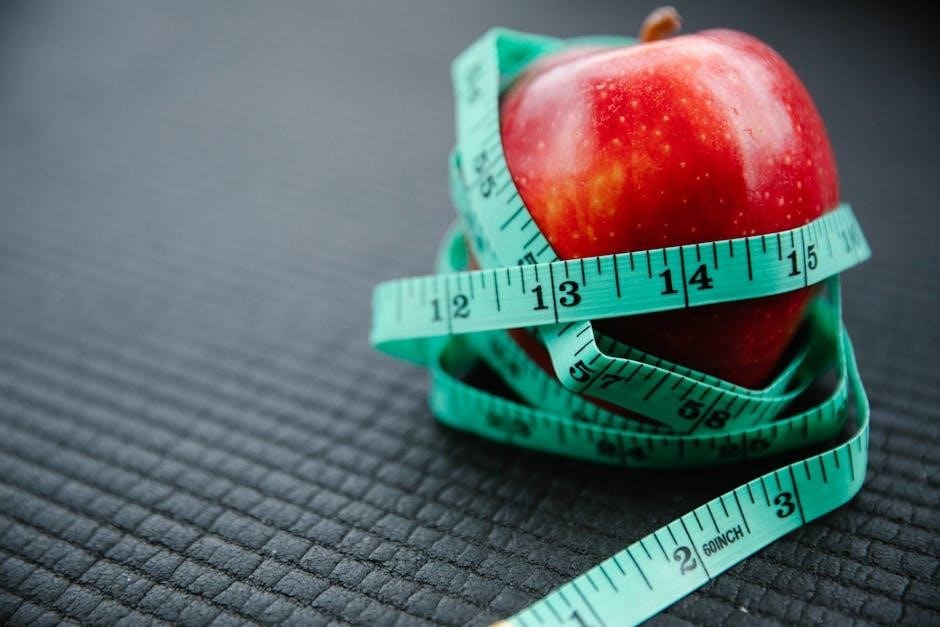
Importance of Consulting a Healthcare Provider
Consulting a healthcare provider ensures personalized dietary advice, helps manage concurrent conditions, and provides regular monitoring for optimal health outcomes on a low histamine diet.
10.1 Tailoring the Diet to Individual Needs
A healthcare provider can create a personalized low histamine diet plan, considering individual symptoms, medical history, and lifestyle. They help identify trigger foods, monitor progress, and adjust the diet as needed. This ensures the plan is effective and sustainable, addressing specific health conditions while minimizing restrictions. Regular check-ins allow for ongoing customization, ensuring the diet remains aligned with the patient’s evolving needs and health goals.
10.2 Managing Concurrent Health Conditions
Individuals with histamine intolerance often have concurrent health conditions like ME/CFS or mast cell activation syndrome (MCAS). A healthcare provider can help manage these conditions alongside histamine intolerance by tailoring the diet and treatment plan. They ensure that dietary restrictions do not worsen other health issues and that nutrient needs are met. This comprehensive approach helps alleviate symptoms and improves overall well-being, addressing the complexity of multiple health challenges simultaneously.
10.3 Regular Check-Ups and Adjustments
Regular check-ups with a healthcare provider are crucial for managing histamine intolerance effectively. They help monitor symptom improvement and ensure the diet plan is working. Adjustments to the diet may be necessary based on progress, and periodic testing can confirm if histamine levels are under control. Tracking symptoms and dietary changes in a journal aids in refining the plan. This ongoing oversight ensures long-term management and prevents potential nutrient deficiencies, fostering a balanced and sustainable approach to health.
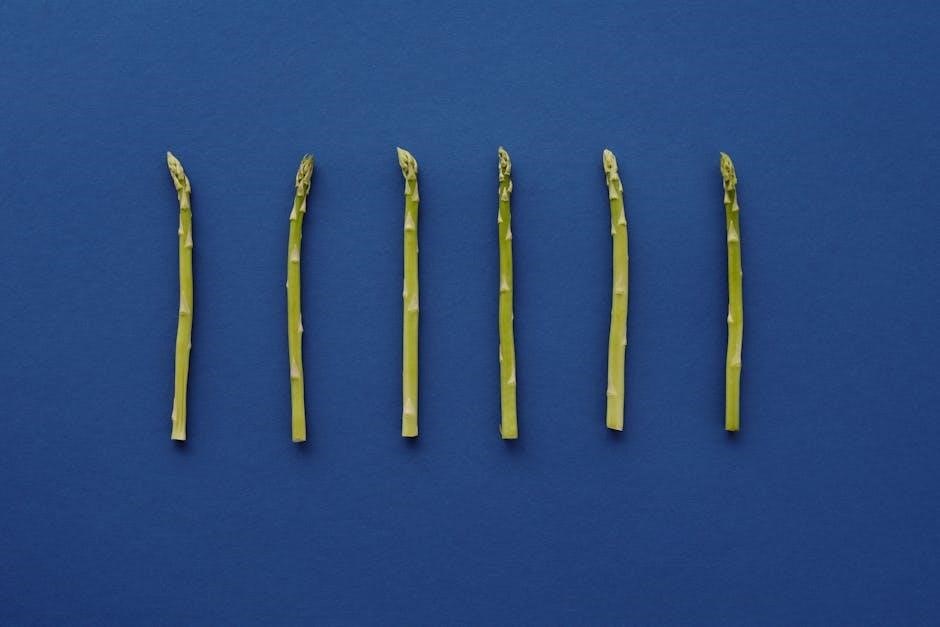
Resources for a Low Histamine Diet
-
11.1 Recommended Reading and Guides
Comprehensive guides on low histamine diets, offering detailed meal plans and symptom management strategies.
-
11.2 Online Communities and Support Groups
Join forums and groups for shared experiences, tips, and encouragement from others following a low histamine diet.
-
11.4 Low Histamine Diet Plan PDFs
Downloadable PDFs providing structured meal plans, food lists, and tracking templates for easy implementation.
These resources help individuals navigate the diet effectively and sustainably, ensuring they stay informed and supported throughout their journey.
For those exploring a low histamine diet, numerous resources are available to guide the process. Books like The Histamine intolerance Workbook and Healing Histamine offer detailed insights and practical advice. Online guides provide structured meal plans, symptom trackers, and food lists tailored to histamine intolerance. Websites such as Mast Cell 360 and low-histamine diet blogs share expert-approved recipes and tips. Additionally, downloadable PDFs like the Low Histamine Diet Plan and Histamine Intolerance Food Guide are invaluable for creating a personalized approach. These resources empower individuals to manage symptoms effectively and sustainably.
Online communities and support groups provide invaluable resources and emotional support for those managing histamine intolerance. Forums like Reddit’s r/HistamineIntolerance and Facebook groups dedicated to low histamine diets offer spaces to share experiences, ask questions, and gain insights. These platforms often feature meal ideas, personal success stories, and expert advice. Engaging with such communities can help individuals feel less isolated and more empowered in their journey. They also serve as hubs for sharing the latest research and tips for navigating the low histamine lifestyle effectively.
Low histamine diet plan PDFs are widely available online, offering structured guidance for managing histamine intolerance. These downloadable resources often include detailed meal plans, shopping lists, and recipes tailored to reduce histamine intake. Many PDFs are created by healthcare professionals or experienced individuals, ensuring reliable and practical advice. They frequently cover topics like symptom management, food reintroduction, and long-term sustainability. These PDF guides are invaluable for those seeking a clear roadmap to implement a low histamine diet effectively and safely, often complementing other resources like eBooks and websites.
A low histamine diet helps alleviate symptoms, supports digestive health, and promotes overall wellness, providing a structured path to sustained well-being and improved quality of life.
12.1 Summary of Key Points
A low histamine diet is a structured approach to managing histamine intolerance, reducing symptoms like digestive issues, skin rashes, and respiratory discomfort. By focusing on fresh, non-preserved foods and avoiding high histamine and fermented items, individuals can alleviate inflammation and improve overall health. The diet emphasizes nutrient-rich choices and anti-histamine properties in certain foods, supporting long-term well-being. Regular monitoring and adjustments, along with professional guidance, are essential for sustained success and symptom relief.
12.2 Encouragement for Long-Term Commitment
Embracing a low histamine diet as a lifestyle change can lead to lasting relief from symptoms and improved health. It’s important to stay committed, as benefits may take time to manifest. Tracking progress and celebrating small victories can help maintain motivation. Remember, this diet is not a quick fix but a long-term solution for well-being. By staying consistent and seeking support, you can achieve sustained relief and enjoy a healthier, symptom-free life. Patience and persistence are key to reaping the rewards of this dietary approach.
12.3 Final Thoughts on the Low Histamine Diet
The low histamine diet is a powerful tool for managing symptoms and improving overall health. While it may require significant adjustments, the benefits of reduced inflammation, enhanced digestion, and clearer skin make it a worthwhile commitment. By understanding histamine’s role and making informed food choices, individuals can take control of their well-being. Remember, consistency is key, and with time, this diet can lead to a more balanced and symptom-free life. Stay informed, stay patient, and embrace the journey toward better health.






